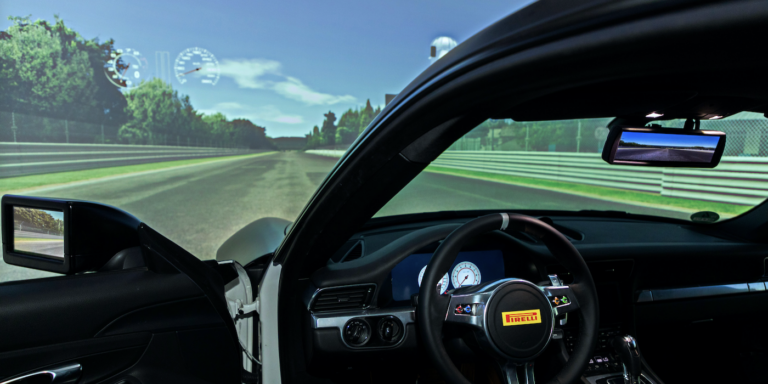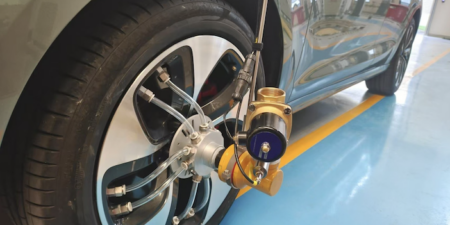Vehicle simulation systems developer, VI-grade, has installed a new driving simulator at Pirelli’s research and development centre in Milan, Italy. The primary use for the simulator, which features active technologies that can precisely replicate vehicle and tyre characteristics, will be as a tool to aid the development of Formula One, motorsport and road-going tyres, and to shorten their development cycles.
The simulator, named Static, allows a virtual model of any car – whether supplied by the vehicle manufacturer or produced internally by Pirelli – to be quickly programmed into the system, while joint design and development work can also be carried out on the OEM’s own driving simulator.
The Static system delivered to Pirelli features a 7.5m diameter, 210° wraparound panoramic screen, which can visually reproduce a wide range of different driving conditions, roads and circuits. At the heart of the system is a static car equipped with various active technologies that can exactly reproduce the sensations a driver feels in a real car. Equipped with a driver’s seat, steering wheel, seat belts, and a choice of shaker systems, the simulator can precisely replicate the movements of suspensions and engines.
This capability means that tyre development programmes can remain perfectly in step with those of the cars they are being developed for. Pirelli will also exploit the driving simulator to maximise the virtual development phase, resulting in a reduction in the number of actual physical prototype tyres required to be made for a development programme.
The Static simulator, combined with the use of other virtual development processes, is expected to achieve a claimed 30% reduction in average development time for new tyres at Pirelli, thanks to the faster assessment of virtual prototypes produced for different car models.





